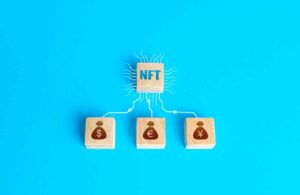Bitcoin ATMs have experienced tremendous growth in recent years. They allow for the sale of Bitcoin for cash or the purchase of Bitcoin for cash. Some of these ATMs have restrictions, while others do not. These restrictions depend on the regulatory situation in the country where the device is located.
Table of contents
Due to their success, fraudsters have discovered Bitcoin ATMs and use them in various ways for their scams. We want to explain how fraud at Bitcoin ATMs works, how you can protect yourself, and what measures to take if you fall victim to fraud.
How does fraud at Bitcoin ATMs work?
Fraud typically involves contacting victims through various means. Social media platforms and messenger programs like Telegram are particularly popular among perpetrators. They can easily initiate contact with the victims through fake profiles and engage in casual conversations. Alternatively, they may contact their victims via email. Regardless of the medium used for contact, the approach remains the same.
Fraudsters pretend various things:
- Urgency: Victims are alarmed that an emergency has occurred. Perpetrators often pretend to be relatives in need or claim there is a technical issue with a bank account or wallet.
- Romantic relationships: In this scenario, fraudsters establish a romantic connection, which requires a significant amount of time. Once they have built a relationship with the victim, they request money under the pretense of being in need or needing funds to finally visit their supposed partner.
- Business or gambling winnings: In this case, the fraudsters claim that either a gambling prize can be claimed or that a highly lucrative business opportunity awaits.
In all three categories, the same pattern typically emerges: The victims are asked to visit a Bitcoin ATM and purchase Bitcoin. This can be either to perform a mirror transaction, provide a supposed liquidity proof, or simply offer financial assistance. Fraudsters deliberately target victims who have minimal knowledge about Bitcoin because the BTC acquired at the ATM goes directly to the fraudsters' Bitcoin address.
Another category, which fortunately plays a minor role in German-speaking countries, involves fraudulent ATMs. These ATMs do not dispense money or Bitcoin, and users of the machines are directly defrauded by the operator. Due to increasing regulations and the relatively quick exposure of such machines, this type of fraud is not widespread. Additionally, setting up physical ATMs involves a certain amount of effort for the fraudsters, unlike pure online scams.
How can you protect yourself from ATM fraud?
The easiest method is to follow some guidelines. Always be skeptical when interacting with strangers, as fraudsters can only succeed in obtaining money if they convince their victims. Avoid unknown individuals who quickly shift the conversation toward investments or ask for financial assistance.
If you suspect that you have been contacted by a family member, verify it by calling back. However, do not use the usually unknown number provided by the fraudsters; contact the affected person or close relatives through known communication channels that you know are authentic.
If you feel uncertain, remember: Do not let anyone pressure you! Fraudsters increasingly apply pressure on their victims to achieve their goals. Unfortunately, this can be observed throughout the entire realm of online crime.
What do ATM operators do to prevent fraud?
ATM operators are naturally interested in ensuring that their machines are used only for legal purposes. Therefore, they usually set up warning notices reminding users not to buy Bitcoin if they have been prompted to do so by strangers.
Additionally, Bitcoin ATMs in many countries are subject to Know Your Customer (KYC) measures. This requires customers to provide identification and potentially register with the provider in advance. This is the case, for example, in Germany. At the largest provider's ATMs, such as Kurant, it is not possible to transact without registration.
Unless dealing with a fraudulent ATM operator, reputable operators generally engage in honest business and are highly committed to fraud prevention.
I have been defrauded, what should I do?
Many people turn to Crypto-Tracing with this question. First and foremost, it is important to remain calm and secure as much information and evidence as possible. This includes chat logs and emails with the fraudsters. If you have had phone conversations with the perpetrators, it is advisable to create a detailed record of the conversations.
In the context of Bitcoin ATM fraud, receipts are crucial. These receipts contain all transaction details, including a QR code. Therefore, it is essential to keep this document safe.
Crypto-Tracing specializes in fraud cases and traces the trails on the blockchain. Through blockchain forensics, we can document where the fraudsters have transferred the BTC. In the best-case scenario, this may even lead to the identification of the perpetrators, which can be of enormous assistance in legal proceedings. Additionally, we work closely with attorney Dr. Maisch, who has excellent expertise in IT law. Together with the lawyer, a report can be filed, supported by Crypto-Tracing's documentation.
Do not hesitate to contact us now through our form. We will get in touch with you promptly and discuss in an initial consultation which actions should be taken in your specific case. Keep in mind that the chances of success also depend on how quickly you act after the fraudulent act.
FAQs on Bitcoin ATM Fraud
How can I recognize a fake Bitcoin ATM?
Pay attention to irregularities and suspicious features. These may include faulty keyboards or insecure installations. Also, verify the reliability of the operator. Reputable companies usually have an online presence with an imprint and are often registered with the commercial register.
How can I find trustworthy Bitcoin ATMs?
The platform CoinAtmRadaris particularly recommended, as it maps out the ATMs and provides additional information. Research and read reviews from other users in advance. Trustworthy ATMs are often located in established stores or public places.
Is skimming possible at Bitcoin ATMs?
Not really, as the ATMs do not accept credit or debit cards for payment. Skimming refers to a method where card-reading devices are manipulated to obtain sensitive information such as the PIN. If you come across an ATM that accepts card payments, it is likely to be fake.
Who supervises Bitcoin ATMs in Germany?
In Germany, the Federal Financial Supervisory Authority (BaFin) is responsible for the ATMs. Since the business is subject to authorization, operators must obtain approval from BaFinbefore commencing their activities. Therefore, complaints related to Bitcoin ATMs can also be addressed to BaFin.





